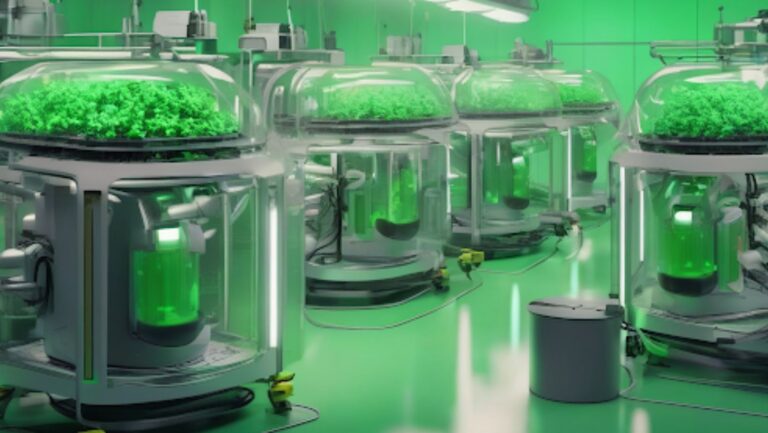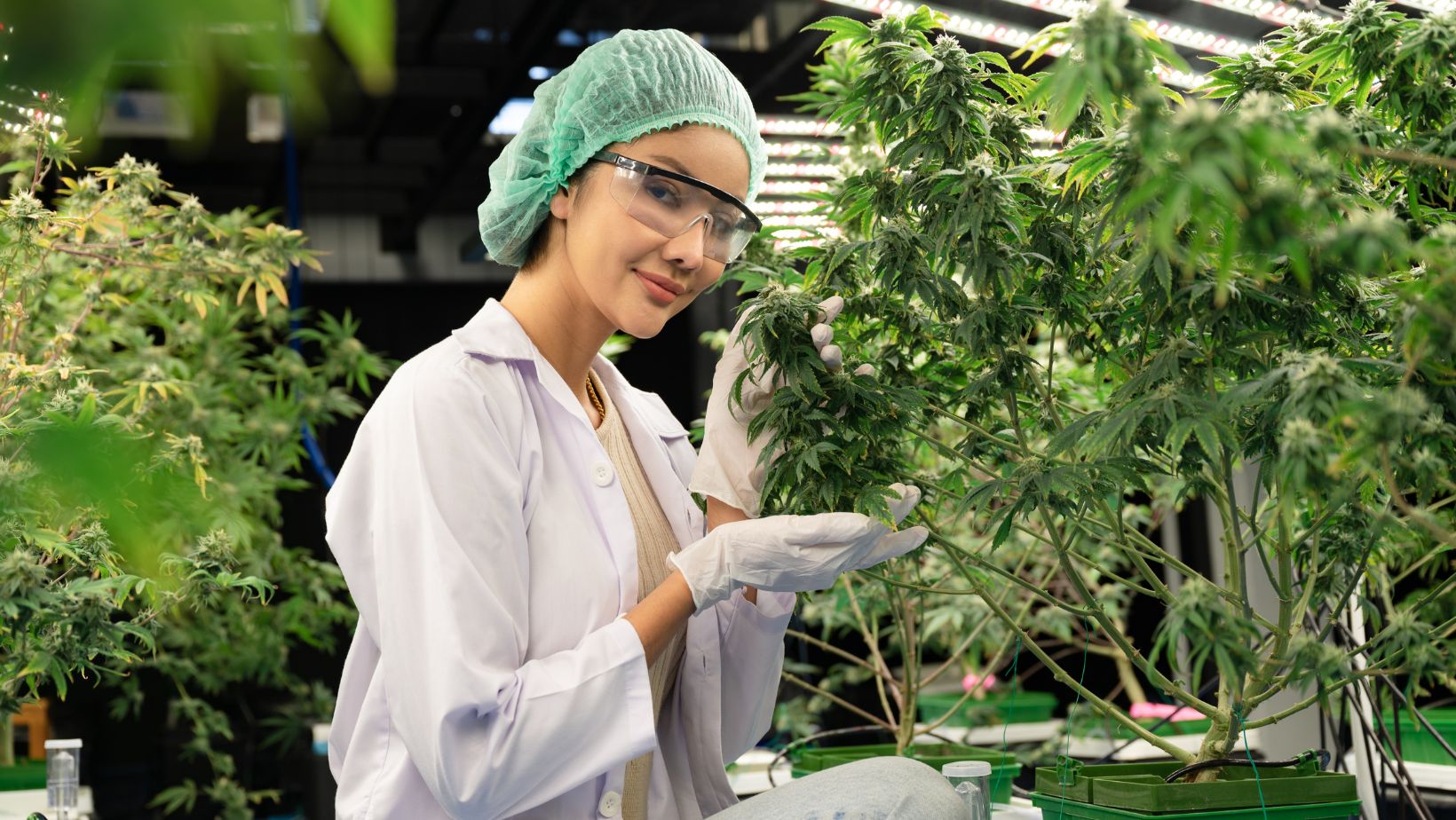As the cannabis industry around the world continues to mature and grow, manufacturers are under increasing pressure to reduce their environmental footprint. Governments, investors, and conscientious consumers are moving beyond making sustainable operations a value-add, and instead are increasingly making it a fundamental expectation. In the growing and rapidly scaling segment of pre-roll production, sustainability innovations are informing every aspect of pre-roll production, from raw materials and automation, to packaging recovery.
Today’s leaders in the industry recognize that sustainable practices create profit, compliance, and distinctiveness from competition. From waste reduction by making eco-friendly packaging more accessible, automating processes to help reduce energy consumption, and informing supply chain transparency to improve customer confidence, the cannabis industry is notably making the move to a more sustainable model. In this article we review a few key sustainability innovations that are impacting the experience of pre-roll manufacturing in the direction of a circular ecosystem, including materials, process optimization, lifecycle approaches and real use cases.
Material & Design Innovations for Eco-Friendly Pre-Rolls
Sustainable packaging begins at the design stage. Pre-roll producers are adopting new materials and techniques that significantly reduce environmental impact while maintaining product integrity. The focus areas include:
- Plant-based and compostable alternatives
- Recycled and reclaimed plastics
- Minimalist fiber and paper designs
These strategies combine environmental responsibility with strong shelf appeal and consumer convenience.
Biodegradable, Compostable & Plant-Based Materials
A significant movement in sustainable pre-roll packaging is the change to biodegradable and compostable products. Hemp-based plastics, PLA (polylactic acid) made from corn starch and even mycelium (a composite of mushrooms) are replacing petroleum-based alternatives.
Brands should understand that “biodegradable” does not always equate to “compostable.” Compostable products decompose into non-toxic items under certain conditions while “biodegradable” will often create microplastics. Both the Cannabis Industry Organization and Cannabis Tech Today suggest brands build products off certified compostable suppliers and educate customers on the end-of-life disposal of packaging.
Innovators like CannaTech are creating bioplastic blends from hemp and renewable resources that focus on function while reducing carbon emissions.
Post-Consumer Recycled & Ocean-Bound Plastics
Another significant innovation consists of post-consumer recycled (PCR) and ocean-bound plastics. Brands like Sana Packaging are on the forefront of this innovation, creating durable pre-roll tubes from reclaimed materials sourced from marine environments. This not only keeps plastic waste out of our oceans but also strengthens a circular economy.
PCR materials offer several benefits:
- Reduce dependence on virgin plastic production
- Lower carbon emissions by reusing existing resources
- Enhance brand image among eco-conscious consumers
Custom Cones USA and others have begun incorporating recycled content into tubes and cones, proving that sustainability can coexist with product quality and consistency.
Paper, Fiber & Minimalist Packaging Techniques
An increasing number of brands are opting for packaging with natural fibers and paper in connection to minimalism. Examples include lightweight wraps, fiber tubes, and bio-based barrier coatings that protect the pre-roll from unnecessary layers. MG Magazine states how this paper innovation is the quiet revolution – manufacturers replace bio-based coatings that keep freshness with foil and plastic inner linings, providing “easier” packaging that is lighter and reduces complexity while being efficient for shipping and delivery.
Many manufacturers using https://rollpros.com/blackbird/ automated pre-roll systems are combining sustainable materials with automated precision filling and rolling, reducing waste, and creating product consistency; combining sustainability with performance.
Process & Automation Innovations that Reduce Waste & Emissions
Sustainability goes beyond packaging; it’s also about pre-roll production. Energy consumption, material waste, and operational inefficiencies create environmental impacts.
Leading manufacturers have proactively adopted new automated systems and materials sourcing strategies to reduce this.
Sustainable Automation & Material Sourcing
Modern pre-roll production facilities are implementing smart automation that increases product accuracy and minimizes waste. Automating the hand-rolling process removes variability so that each pre-roll uses only the flower, paper, and filter size needed.
Choosing local materials and supplies further reduces the carbon footprint. Machines utilizing direct flower packing, rather than using pre-rolled cones shipped from a distributor, reduce emissions from the packaging and shipping process significantly. Cannabis Tech, reported that localized automation enhances production efficiencies and improves supply chain resiliency.
Biodegradable Filters & Eco-Friendly Consumables
Apart from changes in packaging, the materials used inside pre-rolls such as filters and wraps undergo changes as well. The industry is moving away from acetate filters (which can remain for decades) to biodegradable plant-based alternative filters made of natural fibers or hemp cellulose.
These innovations significantly facilitate the end-of-life decomposition process, however, they do not affect the airflow and smoking quality. Some manufacturers are experimenting with using compostable paper for rolling and making pre-rolls with organic adhesives for being completely eco-friendly and meeting contemporary eco-standards.
Supply Chain & Lifecycle Strategies for Sustainable Pre-Roll Manufacturing
To achieve true sustainability, brands must adopt a full lifecycle approach—evaluating every stage from raw material sourcing to post-consumer waste.
| Strategy | Sustainability Impact |
| Lifecycle Assessments (LCAs) | Identify carbon hotspots and optimize processes from production to disposal. |
| Local Sourcing & Vertical Integration | Reduce transport emissions and improve traceability. |
| Energy, Water & Waste Management | Use renewable power, recycle water, and minimize production waste. |
| Take-Back & Recycling Programs | Encourage packaging return or reuse through retail channels. |
| Regulatory & Industry Advocacy | Support recycling standards and “green labeling” for cannabis packaging. |
According to Cannabis Science & Technology, conducting LCAs and implementing closed-loop recycling systems can reduce a manufacturer’s total emissions by up to 30%. These strategies create transparency, helping brands meet regulatory goals and consumer expectations simultaneously.
Real-World Examples & Benchmark Initiatives
Innovation in sustainability is no longer theoretical—several companies are already setting industry benchmarks.
Sana Packaging & Ocean-Bound Tubes
Sana Packaging is the worldwide top brand in green pre-roll packaging Ssolutions. The tubes and jars of the company that are made of plastics recovered from the ocean and hemp-based polymers not only minimize the waste but also repay the environmental damage that comes from the usage of conventional packaging. The eco-friendly manufacturing procedure of the firm is indeed an admirable illustration of the compatibility between environmental protection and business success
CannaZip & Hemp-Based Bioplastics
CannaZip uses bioplastic made from hemp which is biodegradable as well as carbon-negative that is to say they take in more carbon during the growth phase than they emit during the manufacturing process. Their groundbreaking inventions are the changing of the guard in the cannabis brand’s mindset, the materials for the high-tech they once-demanded but now expect no longer to be at odds in the confluence of durability and eco-friendliness.
Automation + Renewable Integration
Firstly, pre-roll manufacturers who are using automation along with renewable energy are making substantial sustainability gains. These producers are not only lowering their overall carbon footprint but also are drastically – through the use of energy-efficient machinery and solar or wind-powered facilities – cutting emissions related to operations. A report by Cannabis Tech states that fully automated lines can lead to a reduction in material waste by 20–30% as well as the improvement of production quality and the safety of workers.
Recommendations & Future Outlook for Sustainable Pre-Roll Manufacturing
To ensure lasting progress, cannabis companies should focus on actionable, data-backed strategies:
- Mandate certified compostable or biodegradable materials to eliminate greenwashing.
- Integrate sustainability at the R&D stage, designing packaging and processes with circularity in mind.
- Invest in local, modular supply chains to reduce logistics emissions and costs.
- Adopt circular design principles—prioritize reusability, refill systems, or modular packaging.
- Support standardization and policy reform that establish clear sustainability benchmarks across the cannabis sector.
Sustainability is evolving from a marketing trend into a core business differentiator. The brands that act now—those who design for efficiency, transparency, and responsibility—will lead the future of cannabis manufacturing.
Conclusion
How to pre-roll in a sustainable manner will no longer be just a dream or a nice-to-have option, but a must-have strategic decision. The use of biodegradable materials, the exactness achieved through automation, and circular supply-chain management have completely changed how the industry defines “green” their new standard.
Proving the way with innovation based on accountability will require mixing technological progress, unequivocal sourcing, and ecological foresight. The whole idea of sustainability crystallizing itself in the cannabis industry’s branding is like winning a double-edged sword: the business can not just prosper financially but also be a leader in the clean, regenerative manufacturing world.





